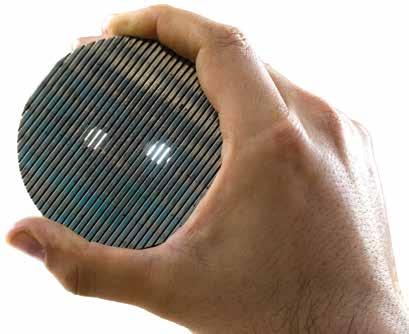
1 minute read
AUTOMATED LEAK DETECTION SYSTEMS FOR THE RAIL INDUSTRY
Currently, railroad employees manually search for air leaks, venturing on, under or between railway cars to listen or feel for leaks. Because this inefficient, time-consuming practice introduces unnecessary risk to maintenance staff, the Federal Railroad Administration has established acceptable air leak rates for trains.
To significantly reduce these leaks, SwRI has created a system that uses audio detection technology, visual cameras and machine learning to autonomously detect, identify and report air leaks, even on moving trains. During testing, the prototype system successfully detected a range of air leaks at various locations with a false positive rate of only 0.03%. The system detected 11 out of every 13 leaks on a moving train. Once the system identifies an air leak, it electronically shares an alert and an image of the site with maintenance for repairs.
The system — funded by the Transportation Research Board’s (TRB) Rail Safety IDEA program and led by Stoos, Senior Research Engineer Heath Spidle and Research Engineer Jake A. Janssen — needs additional field development and testing.
SwRI scientists have compiled 41 solar occultation observations of Saturn’s rings from the Cassini mission. The compilation, published recently in the scientific journal Icarus, will inform future investigations of the particle size, distribution and composition of Saturn’s rings, key elements to understanding their formation and evolution.
“For nearly two decades, NASA’s Cassini spacecraft shared the wonders of Saturn and its family of icy moons and signature rings, but we still don’t definitively know the origins of the ring system,” said Dr. Stephanie Jarmak, a researcher in the SwRI Space Science Division. “Evidence indicates that the rings are relatively young and could have formed from the destruction of an icy satellite or a comet. However, to support any one origin theory, we need to have a good idea of the size of particles making up the rings.” Cassini’s Ultraviolet Imaging Spectrograph (UVIS) was uniquely sensitive to some of the smallest ring particles, particularly with the observations it made in the extreme ultraviolet wavelength.
To determine the size of the ring particles, UVIS observed them when the instrument was pointed at the Sun, looking through the rings in what is known as a solar occultation. Ring particles partially blocked the path of the light, providing a direct measurement of the optical depth, a key parameter for determining the size and composition of the ring particles.
“Given the wavelength of the light coming from the Sun, these observations gave us insight into the smallest particle sizes with Saturn’s rings,” Jarmak said. “UVIS can detect dust particles at the micron level, helping us understand the origin, collisional activity and destruction of the ring particles within the system.”
The team also studied variations in the optical depth of occultation observations, which can be used to understand major differences in the structure and density of Saturn’s rings.







